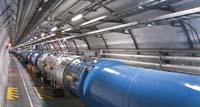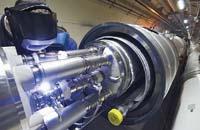Contribution of a Basque organization to LHC
2010/02/28 Kortabitarte Egiguren, Irati - Elhuyar Zientzia
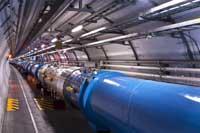
The LHC is the largest and most powerful accelerator to accelerate protons and other particles, located in a 27-kilometer tunnel of circumference buried under the city of Geneva. In this tunnel there was another powerful accelerator, the OPE, but a few years ago physicists decided to dismantle it and dismantle it to build a new one, the LHC accelerator. It was a difficult decision. It took seven and a half years to replace one new. It is a long time for research, but it is supposed that the new accelerator deserves that pause.
Group of accelerators
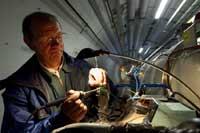
The LHC accelerator is not a single accelerator, but five accelerators, one after the other. Otherwise, it would be impossible for all the energy to generate to be generated by a single apparatus, so it is made step by step.
Therefore, in the LHC the protons will be accelerated first by a linear accelerator that will take an energy of 50MeV. After passing through the other accelerators, they will finally be incorporated into the main accelerator of the LHC until reaching an energy of 7TeV (7 billion eV). Physicists supply the energy data generated by accelerators in electron-volts (eV). An electron is the energy that brings the potential of a volt to an electron.
Looking for many answers
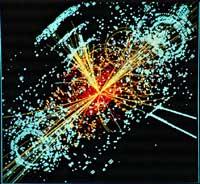
The objective is to generate collisions of great energy between the particles. Physicists will detect and analyze the results of collisions to investigate the original particles. And there is the main difference between the old and the new accelerator, the LHC has a much higher power generation capacity than the old LEP. In these collisions, among other things, the remains of the Higgs boson are sought. At the moment, no one has found the Higgs boson. Similarly, no one knows whether or not the Higgs boson exists because they have never detected it. If they find it, that is, if that particle exists, the physicists will confirm the most accepted theory that explains the origin of the mass. The main objective of the LHC is the generation of very high energy impacts. But not the only goal. In fact, the search for a single particle does not satisfy the desire to experiment with modern physics, even with the Higgs boson. In addition, they seek answers to basic questions of physics.
For all this it is important to have the accelerator ready. As a result, experts at the Geneva facilities have decided to replace some structures of a certain age. These structures will be replaced by structures developed with new technologies. Precisely, ESS-Bilbao is responsible for supplying this technology thanks to an agreement with the European Nuclear Research Centre (CERN).
They will do everything possible and then physicists will have to wait for the results to give. Experts hope to obtain satisfactory results and compensate for the vacuum that has existed for years in the investigation of particle physics. There is no lack of curiosity.
Published in 7k

Gai honi buruzko eduki gehiago
Elhuyarrek garatutako teknologia



